
Insert a Search Feed anywhere on your website using a Gutenberg Block.

Insert a Search Feed anywhere on your website using a Gutenberg Block.
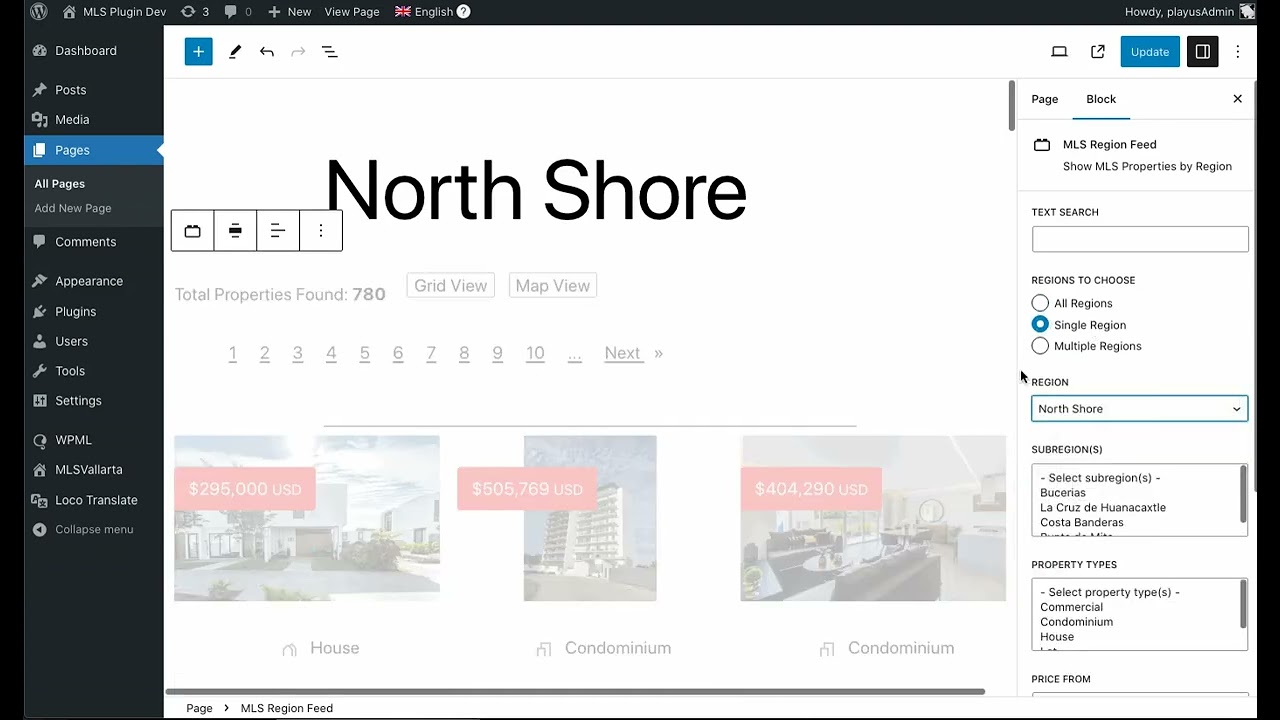
Create and edit a property feed block for your website with the MLSVallarta Feed Block.
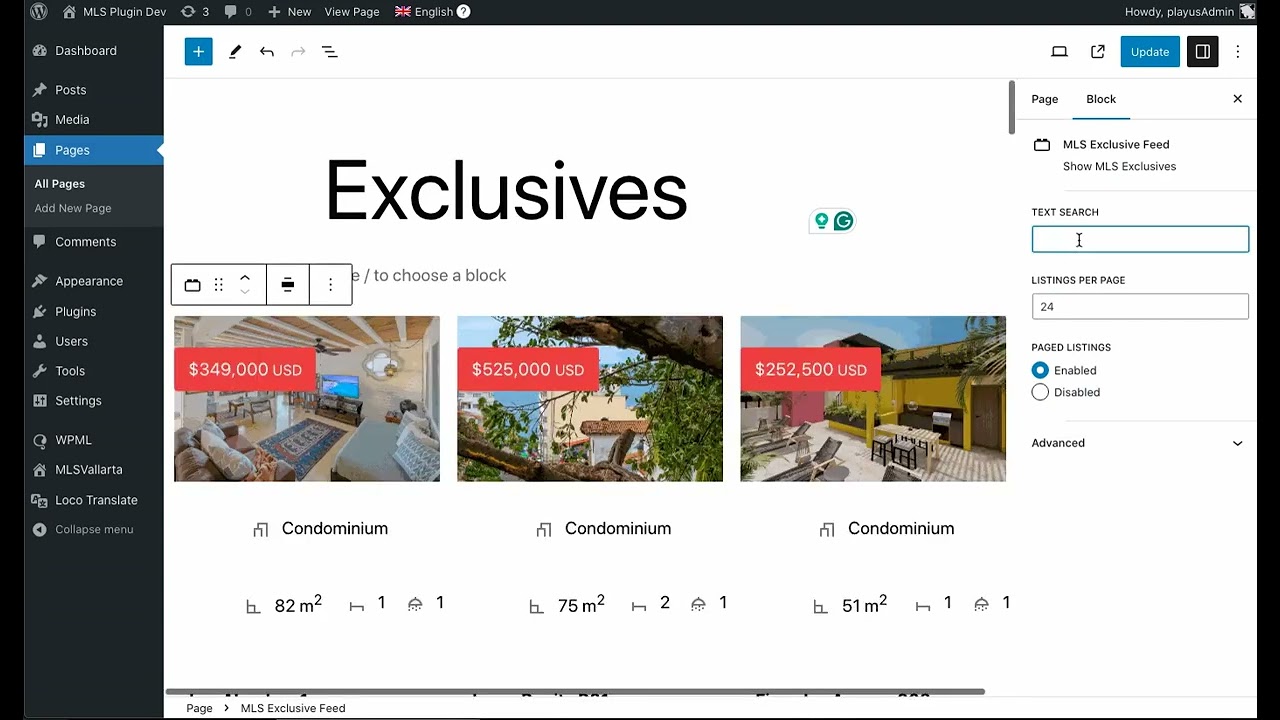
Create a page containing all your agency exclusives using a Gutenberg block.
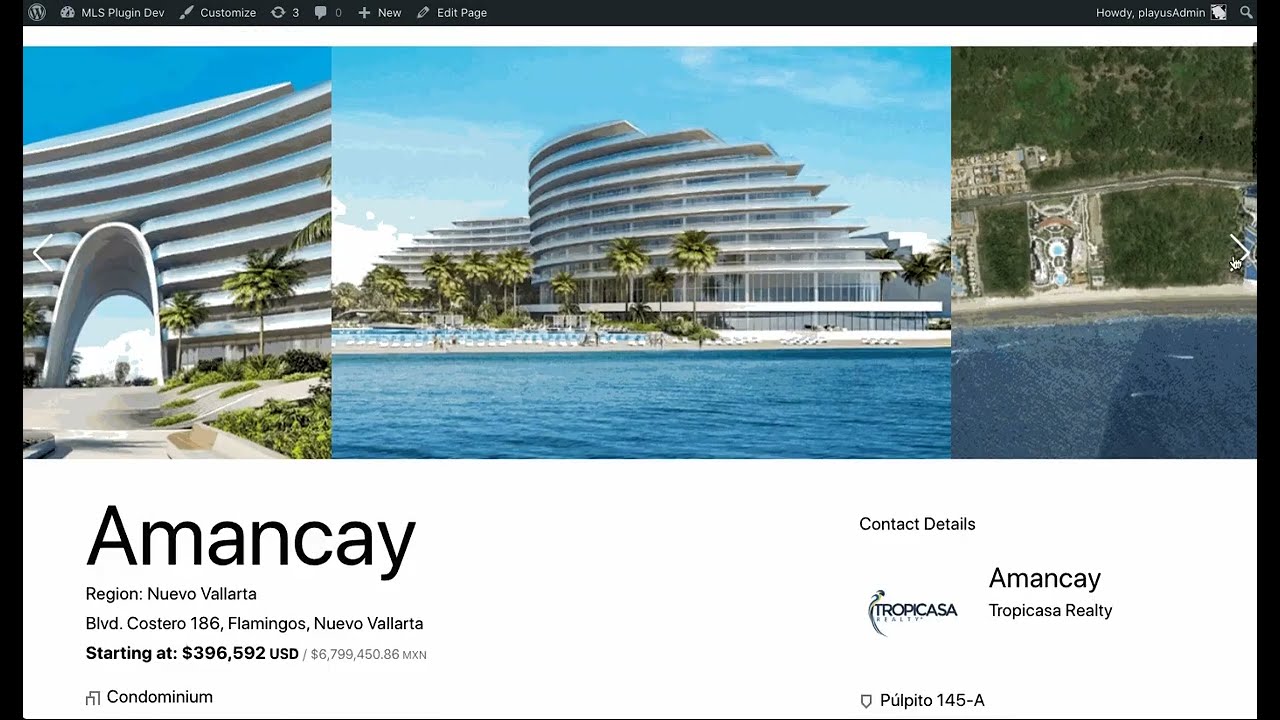
Our development page feature allows you to display a list of all the developments available in MLSVallarta with their inventory.
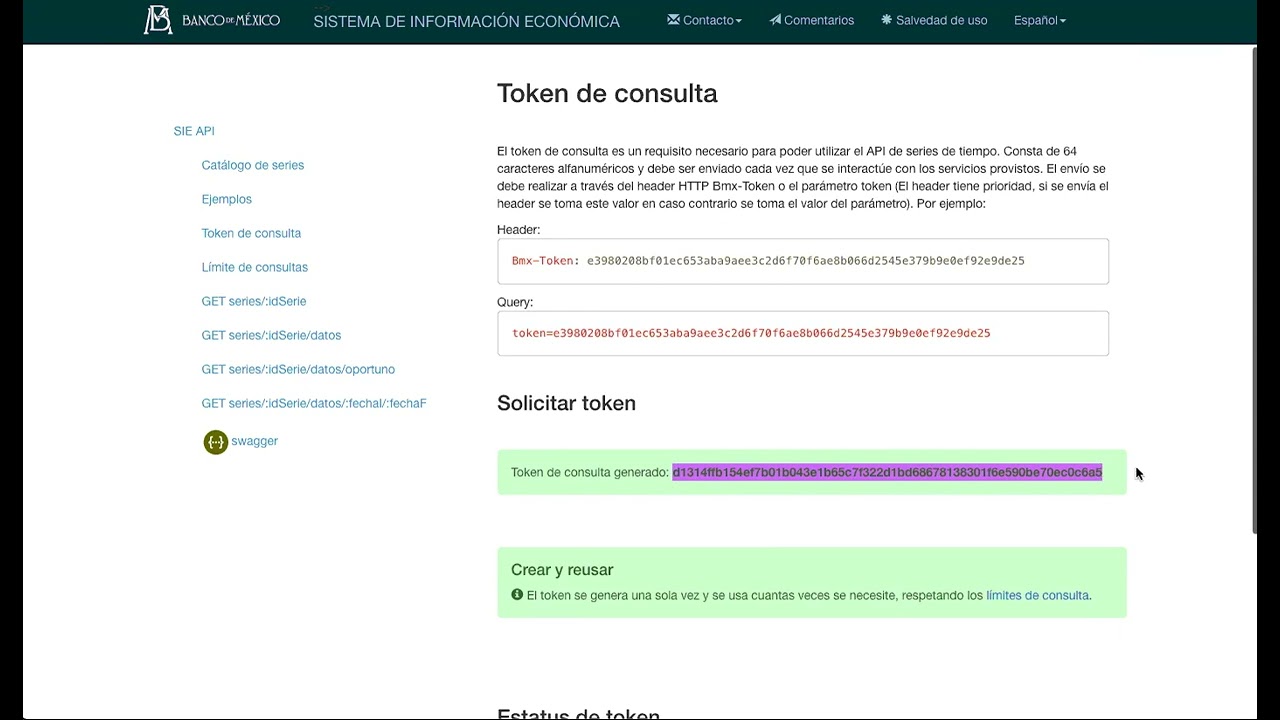
Comply with the new NOM and display all the property prices in MXN using a Banxico Key with your MLSVallarta WP Plugin.
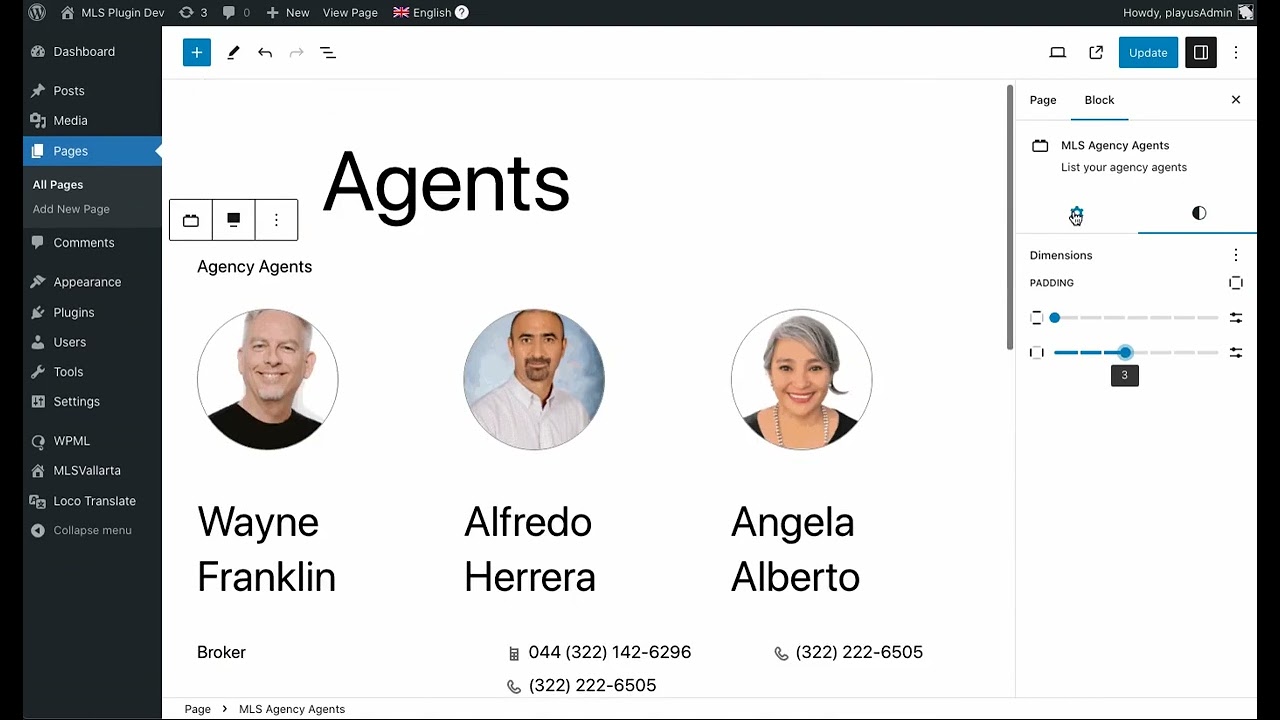
Add an agents block to your site content with our new MLSVallarta “Agents Block”
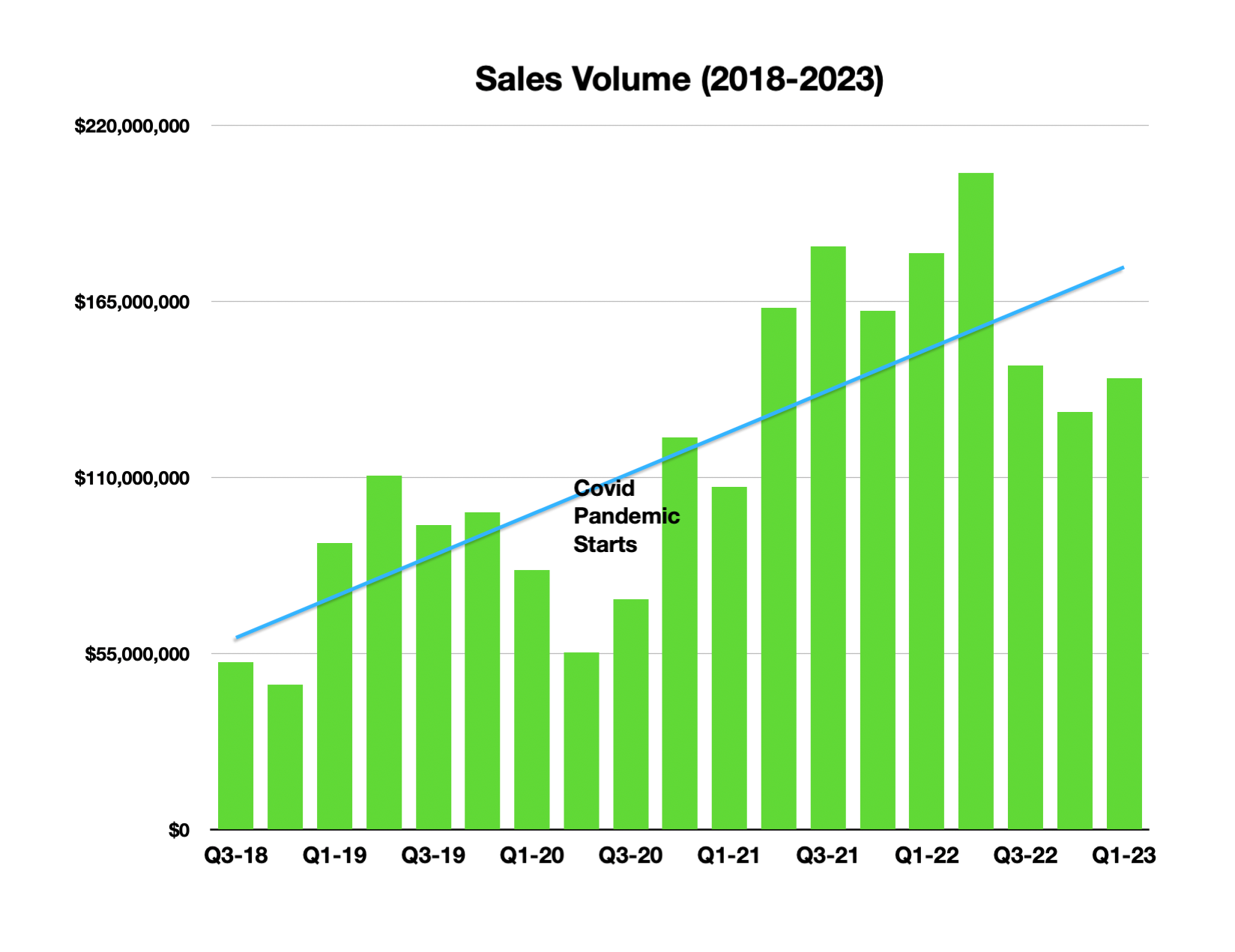
The Puerto Vallarta/Riviera Nayarit region reported gross sales volume of $141 million for the first quarter of 2023, just slightly above the fourth quarter of ’22, but still more than 30% below the all-time high reached in the second quarter of last year with $205 million in sales. That increase in sales, though, was most likely the result of pent-up demand when buyers pulled back during covid. Although volume for the 1st quarter of this year is lower, it’s still above what was reported pre-covid, as the chart below shows.

The Vallarta/Nayarit continues to suffer from a lack of inventory, but should return to a more balanced portfolio of properties as developers continue to build new products to add to existing inventory.
The price of a two-bedroom condominium continues to rise, as the chart below reflects. This is a nearly 20% increase over the average price in 2022 and a 66% increase since 2017.
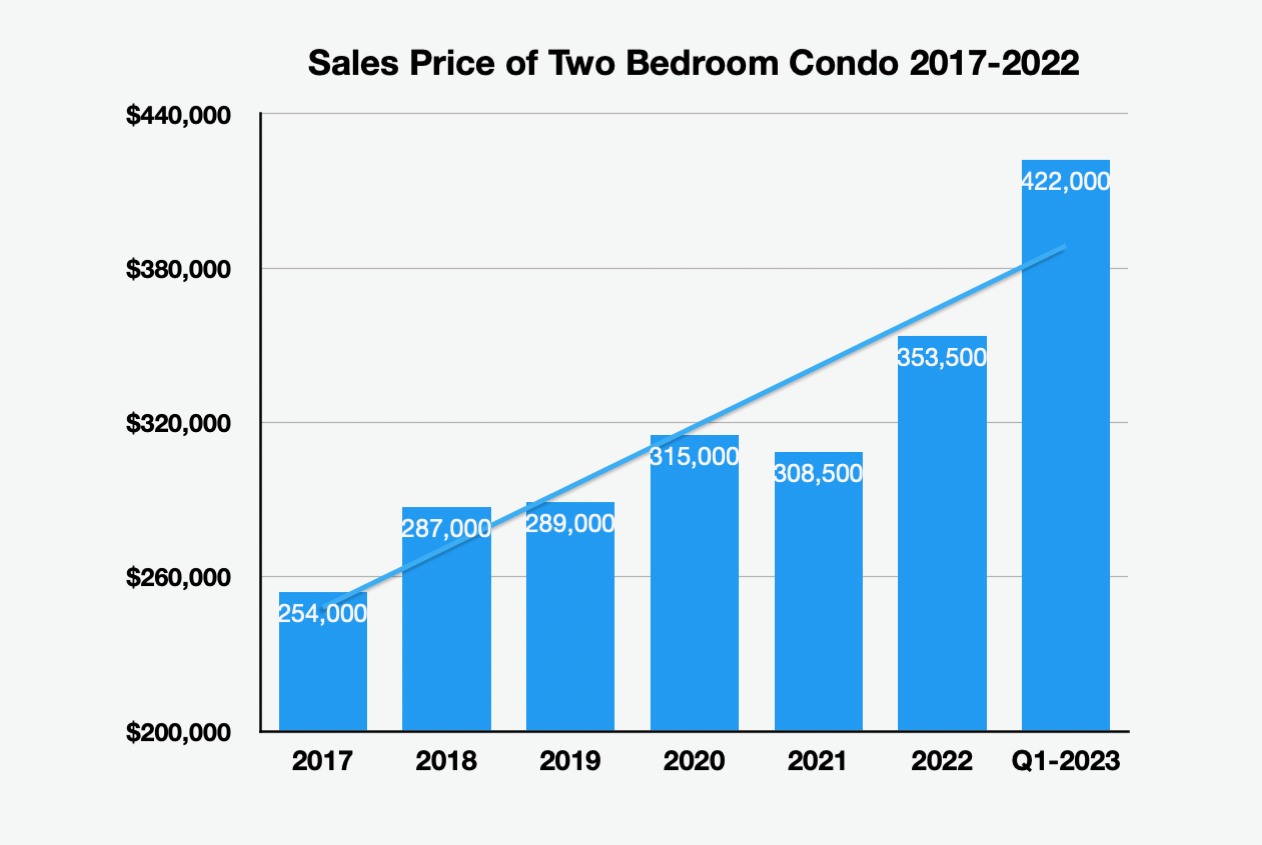
The region with the most activity with 19% of all sales was Nuevo Vallarta/Flamingos, followed by Bucerias, which accounted for a surprising 17% of sales (usually it is around 10%). The loser was the downtown region, Centro South, which dropped from a high of 23% of all sales in 2017, to just 11% in the first quarter of this year. Why’s that? There’s a few reasons. First, starting about 10 years ago, the first market area to recover from the 2008 real estate crash was the downtown, more specifically Central South. Developers could build condominiums off the beach but in the center of town for a reasonable price and offer very popular amenities such as rooftop pools and lounge areas that for many offered panoramic views. They helped lead the recovery in the marketplace. Secondly, in a downturn or recovering market, at least for the Vallarta/Nayarit region, people tend to want something close to the downtown core. As the market improves prices go up because of demand (The average sales price in Central South downtown last year was $452,000 whereas it was only $252,000 in Francisco Villa). Prospective buyers tend to then gravitate to outside areas where property prices aren’t as expensive. That’s what’s happening now, with increased demand outside of Vallarta into Nayarit, and especially behind Vallarta in the region referred to as Francisco Villa, which includes the neighborhoods of Versalles, Fluvial, and Las Gaviotas. This is reflected in the two graphs below:
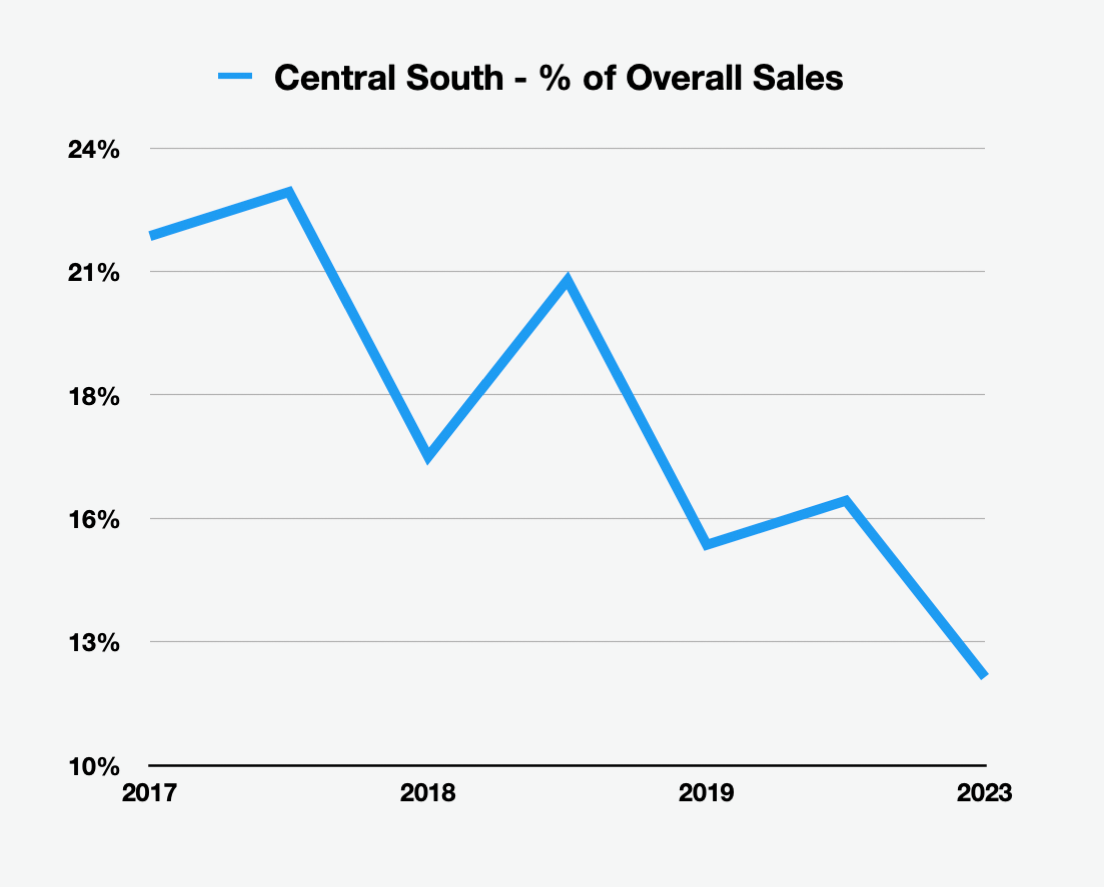
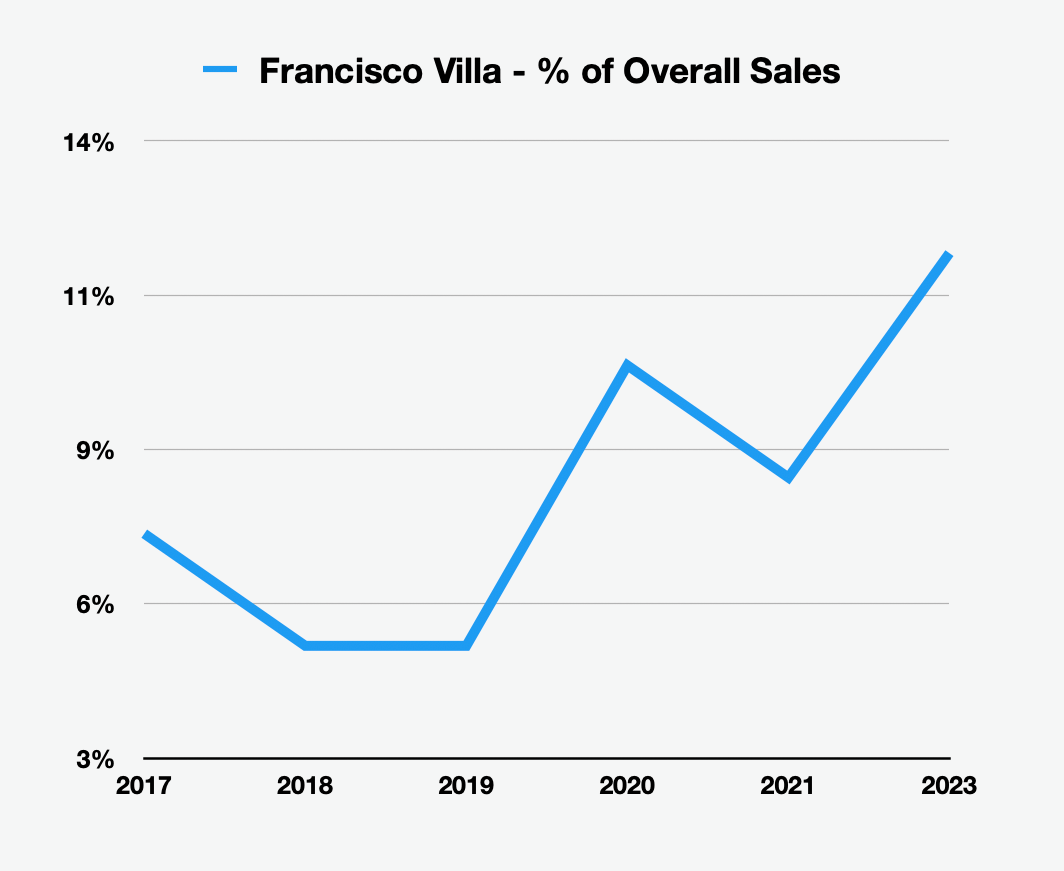
Overall sales volume has dropped not so much because of demand, but because of supply. There isn’t enough good quality properties on the market for the number of people looking. So there’s good reason to think that prices will continue to go up until that demand can be met.

We are a law firm Located in Puerto Vallarta, made up of bilingual lawyers who work under the strictest international standards of ethics and professionalism.
Our main objective is to help our clients protect their investments throughout a Real Estate transaction with peace of mind.
Bahía de Banderas
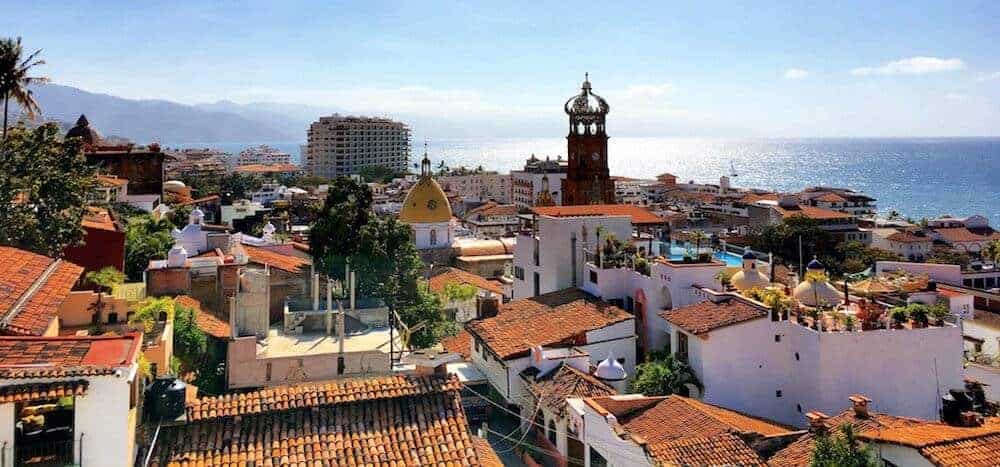
If you want to stay in Mexico for more than six months then you’re going to have to apply for a resident visa, which generally allows you to stay a year or more in the country legally. You apply for a residency visa not in Mexico but at a Mexican consulate in your home country.
Financial solvency requirements for your resident visa will be based on a calculation using Mexico’s minimum wage, which recently went up again, by 20%, to $207.44 pesos (about US $10.80) per day. So be sure that any calculations you make reflect the new minimum daily wage. Each consulate has different ways of converting the minimum wage into euros, U.S. dollars, Canadian dollars or whatever the currency is where you are from, so how much your requirement will depend on the calculations of whichever consulate you use to apply. While currency conversions may vary from consulate to consulate, the value of income, savings and investments you must demonstrate to qualify for a residency visa is based on a single factor: Mexico’s daily minimum wage.
A temporary residency visa can cover a period of more than 180 days to up to four years — how many years is at the discretion of Mexico’s National Migration Institute (INM) after you get your visa. Generally speaking, you are eligible to renew your temporary visa for four consecutive years with little fuss. The problem here is that you are at the mercy of what the immigration office and/or officer you deal with. Some are more lenient than others and you never really know until you talk with one.
A permanent residency visa is for those looking to stay in Mexico indefinitely. It’s generally granted to foreigners who plan to be retirees in Mexico (you must be 65 or older for this) or else people who are dependents of a Mexican permanent resident or citizen, or who are the parent or child of a Mexican citizen.
In both cases, applicants must demonstrate financial solvency to guarantee to Mexico that they have the means of providing for themselves and any family members that are coming with them.
If you’re applying for a temporary residency visa, to prove financial solvency, you must demonstrate one of the following:
SALARIED INCOME: your income during the past three months must equal or be greater than 100 days of the general minimum wage (as applied in Mexico City), and you must also show proof of current, stable employment outside Mexico for at least one year.
PASSIVE INCOME: the total amount of your investment, savings and pension income over the last 12 months must have an average monthly balance equal to 300 days of the general minimum wage applicable in Mexico City.
A family moving to Mexico can apply for temporary residency, but be aware that there will be a financial solvency requirement for each adult and each minor child. Ask your consulate for specifics.
Many foreigners are under the impression that owning real estate in Mexico means that getting a Mexican visa is guaranteed, and only for a temporary visa. There’s no guarantee, however, that owning a home or other real estate in Mexico will alone qualify you for residency. Consulates appear to have discretion when it comes to using this as a qualifying factor. But if they do allow it, you’ll need to provide an original and a photocopy of the property’s Escritura Pública (the official deed to the property granted before a Notary Public in Mexico). The value of the property stated on the escritura (title) must exceed 40,000 days of the general minimum wage for it to be considered. Note: real estate ownership will only ever qualify you for a temporary residency visa.
Yes, but it only qualifies you for temporary residency. If you’re an investor in a Mexican company or conduct business in the country, the amount of the investment or value of business conducted must equal 20,000 days of the general minimum wage.
How to show proof: provide original and photocopied documents of one of the following:
If you’re applying for a permanent residency visa, you need to show:
Applying for a visa doesn’t happen in Mexico but in your home country, at the Mexican consulate. Be aware that in all cases, consulates expect that you will provide your own photocopies of the documents you are submitting. Don’t expect them to make copies for you when you get there. Your consulate may even ask to keep originals. If you don’t want to give up your original documents, ask ahead if a certified copy granted before a Notary Public can be accepted as an original. A certified copy is considered to be equal to an original unless in specific cases mandated by the authorities. So make sure to ask.
According to Mexican officials, it will take up to 10 working days in any of the aforementioned cases.
If the visa is granted, your next step is to obtain your residency card in Mexico. The deadline to apply for the residency card is 30 calendar days after entering Mexican territory. This can be done at any INM office in Mexico. This process can’t be done at Mexican consulates or embassies, itt must be done at an INM office. The consulate only gives you general approval for a visa. INM will be the final arbiter of for how long your first temporary visa will be valid — up to a maximum of four years.
Many foreigners from countries that aren’t required to obtain a tourist visa to enter Mexico (e.g. U.S., Canada, Schengen Area countries; see this link for the full list of countries) are granted at least a year and are eligible to renew upon their first visa’s expiration.
You must notify the immigration authority of any change in your marital status, nationality, the address where you live or your place of work within 90 days after said change occurs.
Thanks to the Mexico News Daily for their article on this matter.
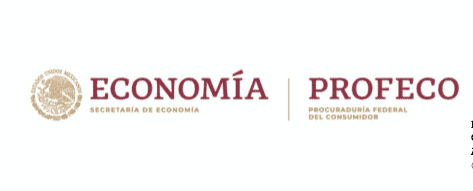
If you have been active in the real estate market in recent months, it is likely that you have read or heard about a new regulation that involves PROFECO (Mexico’s Consumer Protection Agency) and providers of real estate services. This has given rise to all kinds of questions and concerns, which we will seek to clarify below.
First of all, we are going to give a bit of context around this Official Mexican Norm. This norm, called “Commercial practices-requirements for commercial information and advertising of real estate intended for housing and minimum elements that related contracts must contain”, is mandatory at the national level for all providers of the real estate industry and entered into force on September 19 of this year.
Although the norm was created with the intent of mainly regulating the purchase and sale of new housing by developers and builders, it was extended to also include real estate intermediaries.
Even though the Puerto Vallarta and Riviera Nayarit chapters of AMPI (Mexican Real Estate Association) have managed to establish a high industry standard for those who are members this association, real estate marketing practices have had very little official regulation in other parts of Mexico, and in many cases, they are involved in problems that affect consumers and therefore their assets.
The objective of this standard is to guarantee consumer protection when buying a home. In other words, NOM 247 indicates the “good act” for those who are dedicated to marketing and selling real estate and establish what they must offer and guarantee.
Therefore, the norm was conceived with the perspective of always seeking the good of the consumer, eliminating bad practices: abusive, unfair or discriminatory, and reducing fraud against the interests of the client.
This norm establishes that suppliers are obliged to inform and respect prices, rates, guarantees, qualities, measurements, materials, finishes, insurance, interest, charges, terms, form and conditions of payment, deadlines, dates and other conditions applicable in commercialization, especially those that have been offered for the delivery of a real estate property, and also dictates the guidelines and minimum information requirements for the commercialization of real estate intended for residential use, such as:
In terms of advertising and promotion, the norm document states that marketing must prioritize responsibility and transparency at all times through truthful, verifiable, clear information that is free of elements that mislead or confuse the consumer due to being misleading or abusive.
One of the most debated questions and points in recent months is the fact of whether or not the rule must be observed by individuals who wish to carry out a real estate purchase and sale operation. It should be noted that this rule is not mandatory for those individuals who intend to transfer their home, but only for those who are service providers.
The NOM defines service providers as developers, builders, promoters, intermediaries in consulting or sales, and in general any natural or legal person who is directly or indirectly dedicated to marketing real estate to the general public for housing.
Consequently, real estate transactions between individuals may continue to be carried out without any change. However, if an intermediary participates, the guidelines indicated in the norm must be observed.
And this is where another series of questions comes in, why does a real estate agency / realtor ask me to sign such an extensive listing agreement? Is it mandatory to use this contract? Why do they ask me for so many documents? What benefits do I have by signing this contract?
The answer is simple; your realtor is looking to provide you with a high degree of professional service that complies with regulations in Mexico and that guarantees your rights as a client, and also to ensure the interests of the future buyer. This translates into more work and responsibility for the service provider on your behalf and the question, if that were the case, should be rather why is he/she not complying with what is established in the norm?
The listing agreement contract is mainly based on an adhesion contract model of which there are two versions, a PROFECO version and an AMPI version. Both are valid and have a similar content seeking to standardize the provision of the service, guaranteeing minimum rights and obligations for the parties.
Any version that your provider provides must have its own registration folio before the Public Registry of Adhesion Contracts of PROFECO, and must contain, among other things:
One of the most notable benefits for the client is that PROFECO’s competence would allow faster reconciliation if necessary.
In my opinion, this NOM-247 will have a positive impact on reducing the number of operations that may affect the patrimony of consumers in terms of housing in Mexico, but above all, it is a norm that will require the continued professionalization of the activity of participants in the real estate industry and further standardizing the terms of service and sale.
This article was written and provided by David Moreno of LARIVIERA Group